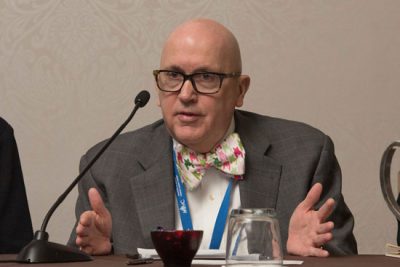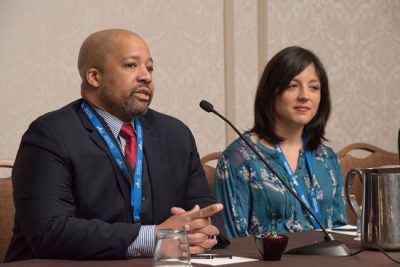by first-year DVM student Eric Ham

The 2017 Iverson Bell Symposium brought representatives from veterinary schools all over the country to Washington DC, where they shared ideas about how to improve diversity and wellness in the veterinary profession. This year’s theme was “Building a Diverse Workforce to Serve Global Needs.”
I was one of five students that attended the symposium on behalf of the Michigan State University College of Veterinary Medicine. The conference focused on several key areas, including cultural competency, promoting student wellbeing through curriculum, and creating a climate of inclusion.
Creating a Climate of Inclusion for LGBTQ Colleagues
Saturday started off with a panel of administrators, who spoke about how to create a climate of inclusion for the LGBTQ community. Representatives from Tufts University, Texas A&M, North Carolina State University, University of Florida, University of Missouri, and Michigan State University spoke about addressing issues proactively in order to maintain a welcoming environment. MSU will be hosting workshops all throughout April focused on LGBTQ issues.
Mental Health Outcomes and Stressors in LGBTQ DVM Student Body and Workforce
Dr. Michael Chaddock, associate dean for Administration at MSU, spoke about raising awareness of the challenges facing the LGBTQ community. There is a lack of safe areas for the community to congregate, and a lack of social programs to help people who are discriminated against because of their sexuality. The exclusion and profiling of LGBTQ individuals have led to a suicide rate 1.5–3 times higher than the non-LGBTQ population.
The next speakers also were from MSU. Dr. Hilda Mejia Abreu, assistant dean for Admissions, Scholarships, Diversity and Inclusion, and Felix Rodriguez, a second-year DVM student, shared wellness survey results from vets, vet students, and staff.
The survey revealed that there was an increase in suicidal thoughts and attempts, but that they had decreased with the introduction of open marriage laws: 76% reported having received homophobic remarks at school, while 46% reported receiving homophobic remarks at work. From these results, the recommendations were made to include a gender identity statement in the AVMA non-discrimination policy, to use the term “inclusion” rather than “diversification,” and to include an essay about inclusion on the VMCAS application.

Bridging the Cultural Gap Between Animal Care Professionals and the Spanish-Speaking Workforce: An Interdisciplinary Approach to Linguistic and Cultural Competency
An experimental class at Colorado State University aimed to introduce second-language education into their curriculum. Taking a novel approach, they focused on layman medical terms and simple conversation in order to be able to communicate with clients.
Promoting Student Wellbeing Through the Curriculum
Colorado State University and the University of Alaska are implementing wellness courses where students track their sleep schedules, learn to make healthy meals, and voice how they are feeling about life in small group settings. Their goal is to help students better maintain a sustainable work-life balance.
Combating the Ostrich Effect: Financial Advising for Veterinary Students
The “ostrich effect” describes how individuals will avoid negative information, especially regarding finances. Chad Jones, a financial advisor at Colorado State University, spoke about how vet students are prone to this effect, preferring to concentrate solely on school and telling themselves that they will worry about their loans and salary after graduation. Unfortunately, veterinary school costs can be high, and interest on loans can build up quickly. Also, good financial habits are not developed overnight. By waiting to look at their finances, many vet students find themselves in a much deeper hole than they would be in if they had evaluated their situation earlier. Mr. Jones recommends focusing on budgets, tracking costs, and forecasting loan payment amounts along with prospective salaries in the field.
